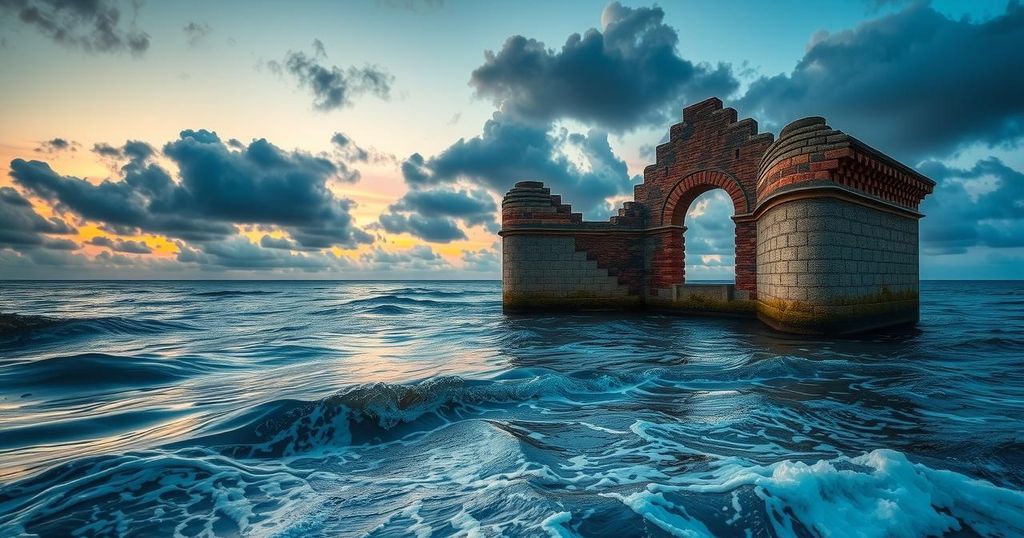A recent study reveals that Alexandria, Cleopatra’s birthplace, is experiencing a surge in building collapses due to rising sea levels and coastal erosion, increasing from one collapse per year to approximately 40. Researchers warn that about 7,000 historical structures are at risk, urging the implementation of sustainable barriers to protect the city’s historic architecture.
Alexandria, Egypt, the birthplace of Cleopatra, is witnessing a significant increase in building collapses attributed to coastal erosion and rising sea levels. New research from the University of Southern California indicates that the frequency of these collapses has escalated from about one per year to nearly 40 annually over the past decade as seawater penetrates beneath structures. This ancient city, founded over 2,000 years ago, is among the most vulnerable areas in Africa, housing approximately 6 million residents and facing threats to its historical heritage.
The city possesses ancient architecture that survived numerous natural disasters, yet it is now succumbing to rapidly rising seas and intensified storms, consequences of climate change. Sara Fouad, the study’s lead author and a landscape architect, expressed that climate change is jeopardizing millennia of human effort and ingenuity. The researchers utilized various methods, including digital mapping, to track the collapse of buildings over a twenty-year period and understand the long-term shoreline changes affecting Alexandria.
Through satellite imagery and historical maps from 1887, 1959, and 2001, researchers observed significant land loss along Alexandria’s coastline, which has shifted inward by dozens of feet within two decades. This shifting coastline has raised groundwater levels and caused seawater to come into contact with building foundations. Analysis of soil isotopes revealed that many structures are collapsing due to seawater eroding their bases and compromising soil integrity.
Even minimal increases in sea levels, described as “just a few centimeters,” can lead to serious structural damages, noted Essam Heggy, a co-author from USC. Approximately 7,000 historical buildings in Alexandria are currently at risk, with past incidents including a significant collapse that caused multiple fatalities. Recent studies attribute these structural issues to groundwater infiltration, highlighting the urgent need for mitigation strategies.
To combat the encroaching seawater, researchers have suggested creating sand dunes and vegetation barriers along the coast, offering a sustainable and cost-effective solution that can be replicated in urban coastal regions worldwide. Co-author Steffen Nijhuis emphasized the broad applicability of such strategies in densely populated coastal areas. Alexandria’s challenges with rising sea levels are shared with many Mediterranean coastal cities and similar regions globally.
In summary, the historical city of Alexandria faces a critical situation as rising sea levels and coastal erosion lead to an unprecedented surge in building collapses. With thousands of structures at risk, immediate action is necessary to protect its heritage and population. Proposed solutions such as natural barriers may provide a viable pathway to mitigate this environmental crisis, a challenge parallels many coastal regions worldwide.
Original Source: www.cnn.com




